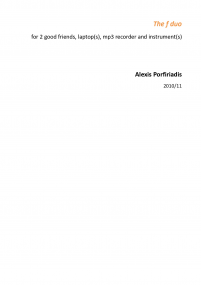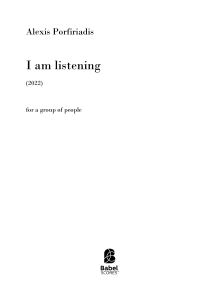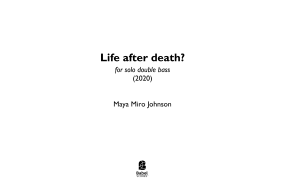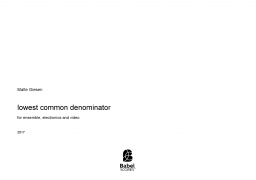66 Sounds to overcome distance
ISMN : 979-0-2325-5662-8
- Login to create your own lists
66 Sounds to overcome distance in an open form composition for a group of people. There are two possible ways to perform this score:
a. Live Performance
Players collectively agree on the total duration of their version. Performers should use ONE copy of the score to prepare their version but cards 1-5 may be used by all participants. The distribution of the material should be the product of collective decisions during the rehearsals and it should not be decided by one single person. Do not distribute the pages in random. Performers may use any amount of the material given, in any sequence to make their version. During the performance, all decisions regarding what page to play should be made individually but always depending on the group sound or the psychological state of the performer.
· Cards 1-5 represent the main sonic material of the piece. The graphics on the cards 1-5 represent 5 different sounds that may be used for the performance of the composition. Each performer should individually study prior to the recording the graphics on the cards 1-5 and ‘translate’ them sonically if one is going to use any of them. The chosen sounds (if for example a player decide to use Cards 1,3 and 4) should maintain the same texture throughout the piece, but they may change their duration or pitch.
· Cards 6-21 connect a sound with a psychological state. These cards may be performed using the Sounds of the Cards 1-5 or any other one sound for each card (no melodies, no rhythmic patterns).
· Cards 22-48 represent a sound in relation with a different sound. In some of them the sounds are also visualized by graphic examples of the sonic situation. These cards are to be performed using any sound of the Cards 1-5.
· Cards 49-53 represent relations between sound(s) and Silence [I use the (s) because of Card 52]. There is also one ‘Silent’ card. The sound(s) for these cards should come also from the sounds of Cards 1-5.
· Cards 54-66 invite the performer to listen to the group sound and add a sound to it, in order to affect the sonic result in a certain way. These cards are to be performed using any sound of the Cards 1-5.
b. Remote Recording Procedure
General
66 Sounds to overcome distance consists of 66 cards. Performers may use any amount of the material given, in any sequence to make their version.
· Cards 1-5 represent the main sonic material of the piece. The graphics on the cards 1-5 represent 5 different sounds that may be used for the performance of the composition. Each performer should individually study prior to the recording the graphics on the cards 1-5 and ‘translate’ them sonically if one is going to use any of them. The chosen sounds (if for example a player decide to use Cards 1,3 and 4) should maintain the same texture throughout the piece, but they may change their duration or pitch.
· Cards 6-21 connect a sound with a psychological state. These cards may be performed using the Sounds of the Cards 1-5 or any other one sound for each card (no melodies, no rhythmic patterns).
· Cards 22-48 represent a sound in relation with a different sound. In some of them the sounds are also visualized by graphic examples of the sonic situation. These cards are to be performed using any sound of the Cards 1-5.
· Cards 49-53 represent relations between sound(s) and Silence. There is also one ‘Silent’ card. The Sounds for these cards should come also from the sounds of Cards 1-5.
· Cards 54-66 invite the performer to listen to the group sound and add a sound to it, in order to affect the sonic result in a certain way. These cards are to be performed using any sound of the Cards 1-5.
Recording Procedure
Players collectively agree on the total duration of their version. Each performer should have a copy of the score. Each member should choose which sounds from the cards 1-5 s/he will use. A group member should be the ‘coordinator’. S/he should be responsible for collecting and distributing the audio files between group members. The procedure should be the following:
The coordinator is the first group member who records his/her part. Then, s/he should send the file to a second group member. This group member should record his/her part, while listening the part of the coordinator in his/her headphones. S/he should then send his/her recorded part to the coordinator. The coordinator should mix the 2 recordings together and send the new mixed file of the 2 recorded sounds to a third group member. The third group member records his/her part while listening to the mix of the 2 recordings in his/her headphones. S/he then sends his/her part to the coordinator, who should mix the 3 recordings and send the new mixed file of the 3 recordings to a fourth group member, and so on.
Material
Sound à Tone, Noise, or anything in between. Always quiet.
Pages - 76














